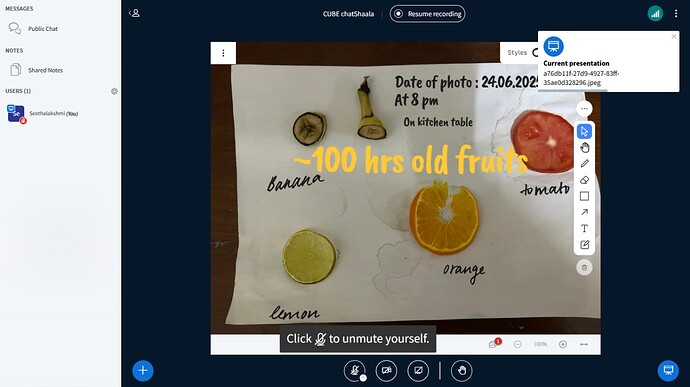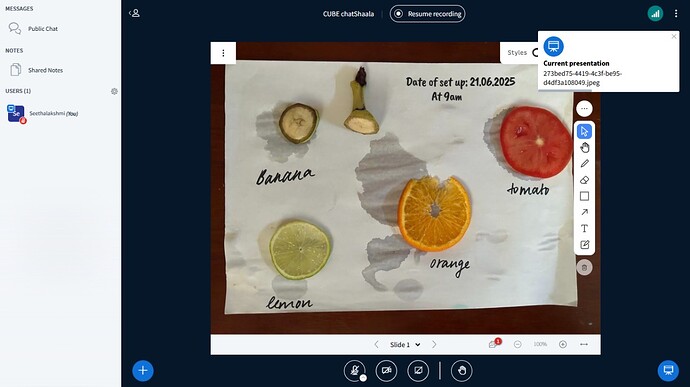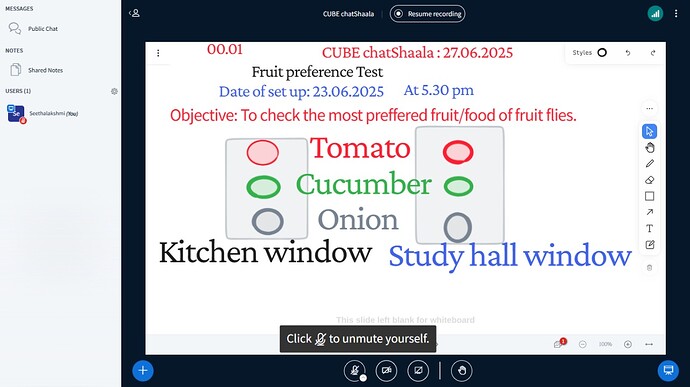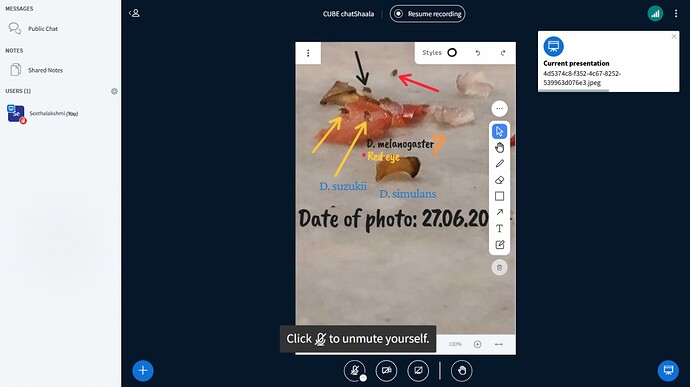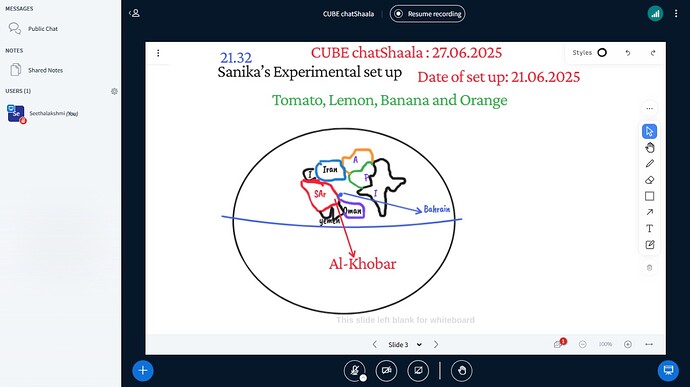The session focused on analyzing fruit fly (Drosophila) behavior and preferences using controlled experimental setups conducted across different locations. @Arunan @KiranKalakotiR @Theertha @nayanjyothi @Enas_188 @sakshiconsultant2002 @akanksha @2020ugchsncnseethala @ajitha @Sanika
![]() Experiment 1: Aging of Fruits
Experiment 1: Aging of Fruits
Images from 21.06.2025 and 24.06.2025 depicted banana, lemon, orange, and tomato slices aged ~100 hours.
Observable changes in texture, color, and fungal growth suggested decomposition progression and potential release of volatiles that attract fruit flies.
![]() Experiment 2: Fruit Preference Test
Experiment 2: Fruit Preference Test
Set up on 23.06.2025 at 5:30 pm.
Objective : To determine which fruit or food item is most preferred by fruit flies.
Foods tested: Tomato, Cucumber, Onion.
Locations : Kitchen Window and Study Hall Window.
Visual scoring used to represent fruit fly attraction at each site, suggesting cucumber as potentially more attractive than others.
![]() Observation of Drosophila Species
Observation of Drosophila Species
Dated 27.06.2025, this slide identified potential species based on visible traits:
-
D. melanogaster (red eye observed)
-
D. suzukii
-
D. simulans
Differences in physical characteristics ( like eye color and size ) were discussed for field-level identification.
![]() Mapping the Experiment Location
Mapping the Experiment Location
A map illustrated the geographical setup of a related experiment by Sanika in Al-Khobar, Saudi Arabia.
Fruits used : Tomato, Lemon, Banana, Orange.
This offers a global context to the fruit preference test, indicating cross-location interest in Drosophila behavior.
![]() Queries for Further Discussion :
Queries for Further Discussion :
-
Why might cucumber be more attractive to fruit flies than tomato or onion? Could it be due to sugar content, moisture, or aroma?
-
What environmental differences ( e.g., light, temperature ) exist between the kitchen window and study hall window that might affect fly preferences?
-
Are there any specific signs to reliably distinguish D. melanogaster from D. suzukii in field conditions without a microscope?
-
How might the age of the fruit ( as seen in 100-hour-old samples ) influence the number and type of fruit flies attracted?
-
What measures were taken to ensure consistency across different observation sites ( e.g., same fruit cut, same exposure time )?
‐‐‐
![]() Sources
Sources
